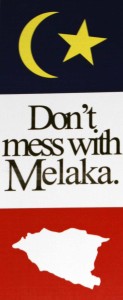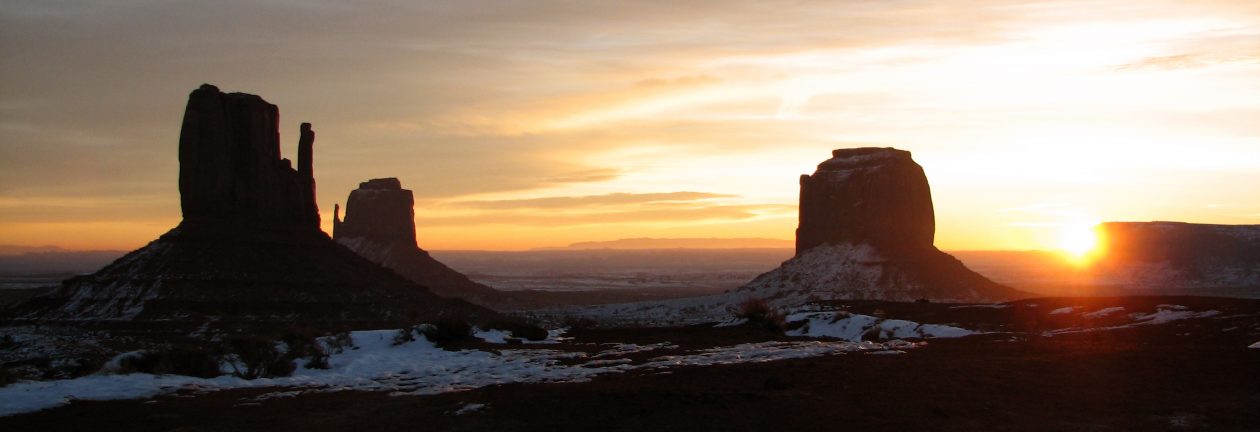Malacca, Malaysia
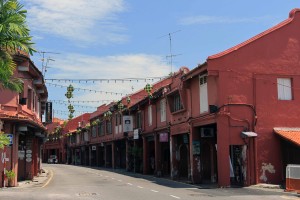
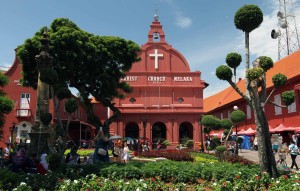
After a long night of not being able to sleep, I think I finally dozed off at about 05:30; so it is understandable that I when I finally did wake up it was shortly after noon. I then got ready and grabbed my camera and tripod to capture Malacca in the daylight, and there was a lot of light – the sun was out strong today. I first walked back down to the Dutch Square where the Christ Church of Melaka is located; the church was built by the Dutch in 1753 to commemorate the centenary of their occupation in Malacca and when the British took over they made a few additions to the structure and changed it from a Dutch Reform Church to an Anglican Church. Also located in the Dutch Square is the Stadhuys (“Town Hall”), which was built by the Dutch in the 1650s after they took over from the Portuguese in 1641; when the British took over, they continued to use the Stadhuys as an administrative building. Note: with the influence from the Portuguese, Dutch, and British colonial rule, Islam as the dominant religion, and immigrant laborers from China and Indonesia, Malacca is one diverse melting pot, which makes it a very unique place worth visiting.
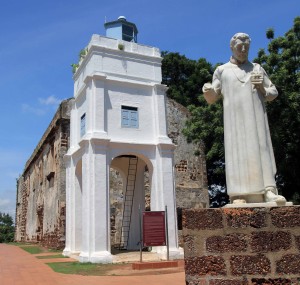
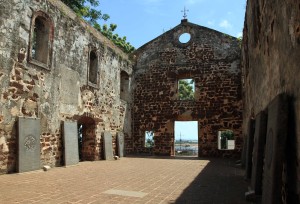
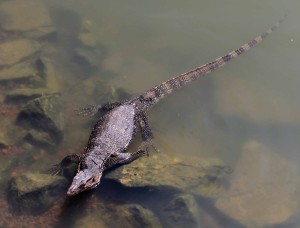
From the Stadhuys, I walked up to St. Paul Hill; at the top of the hill is the ruins of St. Paul’s Church; it was originally a Catholic chapel built in the 16th-century by a Portuguese sea captain and named “Nosa Senhora” (“Our Lady of the Hill”); when the Dutch took over, the church was made in to a Protestant church and renamed St. Paul’s Church, but when Christ Church was built, the church fell in to disrepair. After walking through the ruins of the church, I walked down the hill, through the old Dutch cemetery, and then made my way through the city until I finally ended up at the Melaka River – not far from the Dutch Square. I walked by a giant waterwheel (a replica of an actual one that was in Malacca hundreds of years ago) and a restored portion of Malacca Fort. I then crossed the bridge over the river and entered in to Chinatown.
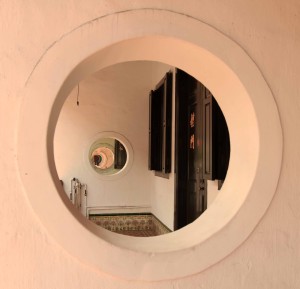
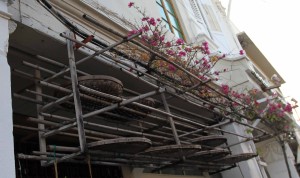
I then walked down the same streets I had walked the night before and made my way to the Baba and Nyonya House Museum (Baba means “Man”, Nyonya means “Woman”). The museum belongs to a Peranakan family whose ancestors had lived there since 1861; they were well-to-do merchants and the home is actually the combination of three adjacent two-story townhouses. The rooms were set up to show the master bedroom, the waiting area, the ladies waiting room (where they could look through slits in the wall to see their gentlemen callers in the waiting room), the dining area, kitchen, open courtyards (the courtyards were small, but did open the home up to fresh air and light), a room showcasing funeral and birthday decorations and gifts, a room for ancestor worship, a room showing items used in wedding customs, and a ladies leisure room (where the adults could play mahjong and listen to records. I was with a group given a guided tour and it was well worth it to glimpse in to the life of a mixed (Chinese and Malay) family home in the early 20th-century. Also, I really liked the open-air, large rooms, well-constructed furniture built to last, and manual-labor, “do it yourself”, items found in the kitchen (the hand-crank coffee grinder and ice cream maker, the ice box, the old brick stove that used wood and charcoal, the pestle and mortar – these items will last a long time and don’t need electricity to function). If I had the monetary means, I would purchase a house and set it up in a very similar fashion (I also love the elegant and simplistic look of the early 20th-century). Too bad photography was not allowed, otherwise I could share pictures of the home on this page.
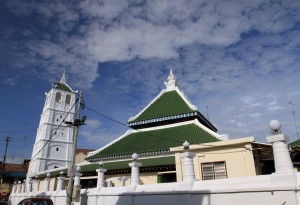
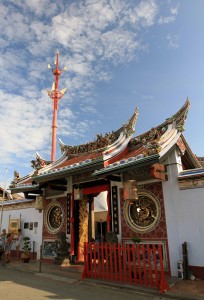
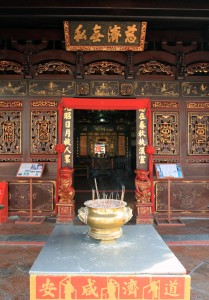
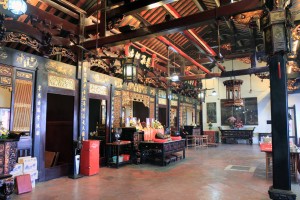
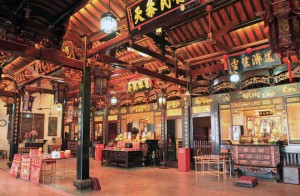
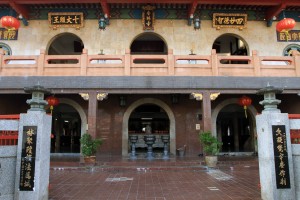
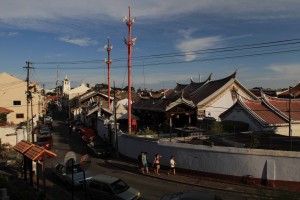
From the museum, I then walked to the Cheng Hoon Teng Temple; the temple was constructed in 1673, the name means “Green Clouds Temple”, and it is the oldest functioning temple found in Malaysia. Also, the temple is dedicated to Kwan Yin, the goddess of mercy, and it is devoted equally to the three doctrines – Taoism, Confucianism, and Chinese-Buddhism. The main hall had three shrines in it for the goddess of the sea, the goddess of mercy, and the god of war and the god of human affairs. Outside and surrounding the main hall, were additional shrines and many altars for ancestor worship (behind the altars were the wooden tablets with the ancestors’ names and some even had photos of the deceased). After walking around the temple, I met up with a French guy I had ran in to last night (he had asked if I knew any hostels in the area); we talked for some time about Malaysia, Indonesia, and Thailand; after we parted company, I walked to the nearby Siang Lin Shi Temple – a Mahayana Buddhist Temple that had been rebuilt in 1985 and is currently managed by nuns and female workers. The Siang Lin Shi Temple is two-stories and on the top floor were large white statues of the three Buddhas, as well as the obligatory drum and bell found on the left and right of most Buddhist temples. Also, from the top floor, I was able to get a nice view of the Cheng Hoon Teng Temple and the Kampung Kling Mosque (located further down the road, this mosque was built in 1872).
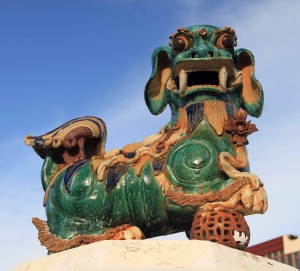
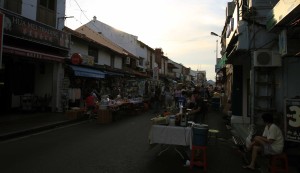
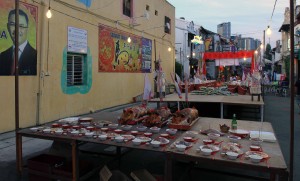
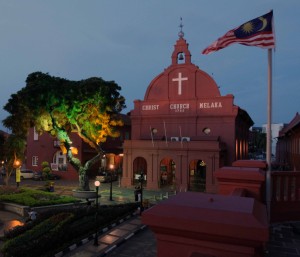
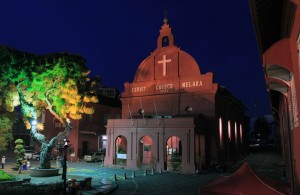
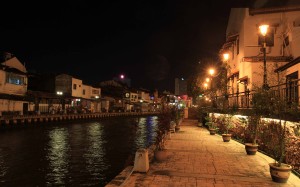
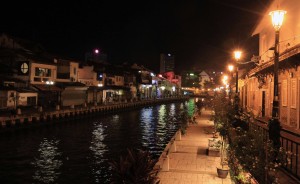
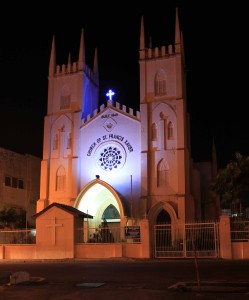
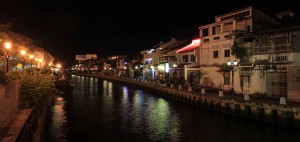
I then walked to the Geographer Cafe and had “nasi lemak” (rice cooked in coconut milk) with sides of peanuts, fried “tempeh” (made from soybeans), a boiled egg, and a spicy dried-tomato sauce; I then had chicken satay with a peanut sauce and rice cubes; for liquids, I had a beer, a sour plum juice (delicious and refreshing!), and a local Malacca coffee. After that fulfilling meal, I walked back to the Dutch Square to take some more late-evening and night photos. Next I headed to the Melaka River to capture the old buildings, cafes, and lights reflected on the water – there were many passenger boats moving in both directions on the river, so I had to wait quite a bit to try to get an undisturbed (or least disturbed) photo of the water. Eventually, after taking many photos, I made my way back to my hotel for the night.
